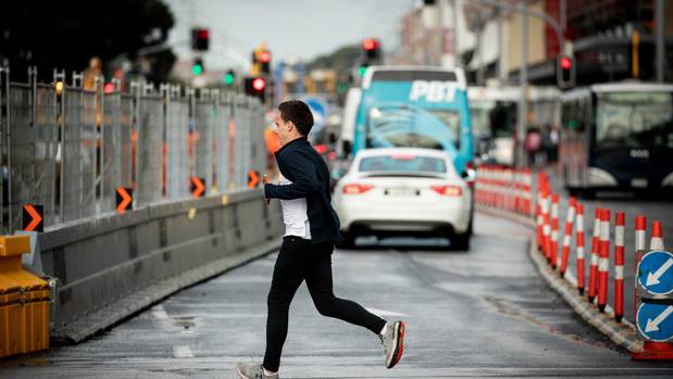
Why do people jaywalk? Because they're used to it.
That's according to a new study that quizzed some 400 pedestrians in Auckland, to find habit was the typical reason people made risky dashes away from crossings.
While many of us might not know it, jaywalking is a crime in New Zealand.
Pedestrians can cop a $35 fine if they cross a road when there's a controlled crossing within 20m, or if the green man is flashing red.
Yet thousands of Kiwis likely break this law every day - and get away with it.
University of Auckland researcher Ajjima Soathong was moved to take a closer look at the issue after she and colleagues examined pedestrian crash reports.
They found that, in 2018, pedestrians made up around 11 per cent of road deaths and serious injuries - and 95 per cent of accidents happened in spots outside controlled crossings.
Still, she said it wasn't really known why people jaywalked in the first place.
At four busy sites around Auckland - Symonds St, Park Rd, Broadway Rd and Grafton Rd - Soathong and colleagues began approaching pedestrians and running through questionnaire surveys.
Those pedestrians - all locals - were quizzed about their attitudes and habits when it came to risky road crossings.
The results pointed to one main motivation: habit.
"For example, in the mid-block crossing scenario, pedestrians initially pay attention when crossing the road to get to their destination," she said.
When the action is well-practised and repeated, the behaviour becomes habitual and requires minimal attention.
"This could be a matter of concern as being inattentive to the road crossing seems to be associated with crashes."
While habit was expected to be an influencing factor, she never expected it would be the biggest one.
"This is partly because pedestrians often react to the environment and assess the traffic condition before crossing."
There were other factors in the mix, too: one was that social norms had effectively made jaywalking socially acceptable.
"As such, increasing road safety awareness and knowledge of associated risks could potentially alter their behaviour," she said.
"And for pedestrians themselves, they need to understand that this behaviour is not a low-risk activity and be aware of their vulnerability."
Further, she found a gender difference. While women were more likely to be influenced by their morals when deciding whether to jaywalk, men were more likely to be influenced by their peers.
With strategic plans mostly focused on road infrastructure, she felt pedestrian behaviour warranted closer attention.
"For road safety practitioners, developing more effective measures and evidenced-based policy can reform pedestrians' perception towards taking the risk to cross a road."
Take your Radio, Podcasts and Music with you









